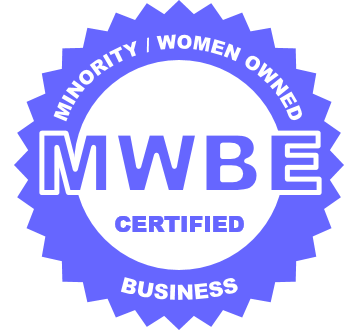SEO for New Website: 5 Things to Get Right From Day One
SEO for New Website: 5 Things to Get Right From Day One September 17, 2025 Building a new website doesn’t just mean a fresh look. If you want organic search traffic, visibility, and leads, you’ll need to plan for SEO from day one. Many companies tend to overlook key details and pay the price once the site goes live. These five considerations ensure your SEO for new website setup isn’t just functional; it’s optimized. 1. Site Structure Isn’t Just UX, It’s SEO Before diving into keywords, think about the way your site is organized. SEO for a new website works best when search engines and users can navigate your content easily. That means mapping out your site from the start. Not everything needs to go on the homepage. Think about how you’ll group your services, products, resources, and other pages. A clear structure helps Google crawl your site and shows users where to find what they need. When URLs follow a clear hierarchy (e.g.,/services/seo vs /services/seo/new-website-setup), both users and Google understand context. Without this, even perfectly written content may fail to rank, because Google struggles to understand where new pages belong. Start with a clear structure: Use keyword themes to guide your sitemap Keep important pages no more than 3 clicks from the homepage Use internal links strategically to support topic clusters 2. SEO for New Website = Keyword Strategy + Intent Keyword strategy isn’t just for blogs; it should shape your entire website. That includes page titles, H1s, meta descriptions, and even navigation copy. If you’re building a new site, SEO begins by identifying what your audience is actually searching for. Use tools like Semrush, Google Keyword Planner, or Google Trends to find those terms, and then map them to specific pages. When your website copy, meta tags, and headers speak directly to what your audience is looking for, you build trust immediately. Strong messaging removes friction. It reassures visitors they’ve landed in the right place. Launching a site with overly broad or generic copy often leads to high bounce rates and low conversions. On the other hand, when messaging anticipates questions (“Will my old SEO content carry over?”, “How long until I see results?”), prospects stick around. Your new website should launch with: A focused keyword strategy based on search intent Pages mapped to high-impact terms that match your service Copy that sounds human, but hits SEO signals 3. Migrating from an Old Site? Handle SEO with Care Starting from scratch doesn’t always mean starting empty. If your business already had a site with SEO-optimized content, blogs that rank, landing pages that pull traffic, or even indexed URLs, you’ll want to migrate all that value to your new domain or structure. But be warned: content migration is where most businesses lose SEO equity. Broken redirects, missing metadata, and changes in URL structures without proper mapping can tank your visibility. At minimum: Map your existing URLs to new ones and apply 301 redirects properly. Preserve on-page SEO elements (title tags, H1s, meta descriptions) during the move. Re-upload media and verify internal links point to the right place. Submit your updated sitemap to Google Search Console. 4. Build Technical SEO Into the Foundation of Your New Site Too many teams wait until launch to “add SEO later.” That’s the fastest way to miss out on organic traffic from day one. Technical SEO should be built into your new website—not patched on afterward. This includes everything from how your content is structured to how quickly your site loads. Moreover, structured data (schema) helps search engines understand your content’s nature. If you have events, reviews, products, or blog posts, proper markup improves how clearly Google sees you. Technical SEO should be baked in before launch, not patched afterwards. You can start by prioritizing: Mobile-friendliness: Use responsive design and test performance across screen sizes. Page speed: Compress images, limit script bloat, and test load times using PageSpeed Insights. Core Web Vitals: These are now confirmed ranking signals. Ensure your site is passing CLS, LCP, and FID thresholds. HTML hierarchy: Use H1, H2, H3, etc. in logical order to structure your content. HTTPS: Secure sites aren’t optional anymore. Robots.txt and XML sitemap: Properly configured files ensure your site is crawlable and indexable. Structured data (schema): Mark up your blogs, products, and reviews so Google can display rich results. Use Schema.org as a reference. Tip: Set up Google Analytics and Google Search Console before you go live. You need visibility into what’s working and what’s not from day one. 5. Plan for Content and Internal Links Once your site is live, the real work begins. Ongoing content is one of the strongest signals in SEO for a new website. Think blogs, case studies, or resources that answer your audience’s questions. But don’t stop there. Use internal links to guide visitors from one page to another. This not only improves the user journey but also distributes SEO value across your site. Something to keep in mind is that SEO rarely delivers visible results overnight. It often takes 3-6 months (or more) for a new website to begin ranking for many key terms. But what accelerates that timeline is consistency (posting content regularly), refreshing old content, and engaging the audience. Publishing helpful blog posts, resources, or guides tied to your audience’s pain points (e.g., “seo for new website migration”, “what metrics matter post‑launch”) creates signals of relevance. Updating pages, adding internal links from new content to older pages, and promoting across social channels; all these amplify reach. Here’s how to keep SEO moving: Commit to a monthly blog cadence (2-4 posts) Refresh top pages quarterly Create new pages based on keyword gaps or customer questions Monitor performance in GA4 and GSC weekly Before You Launch, Get Your SEO in Line Your website isn’t just a digital brochure or a business card; it’s a growth engine. And without proper SEO from the start, you’re leaving visibility, clicks, and pipeline on the table. Whether you’re building from scratch
SEO for New Website: 5 Things to Get Right From Day One Read More »








